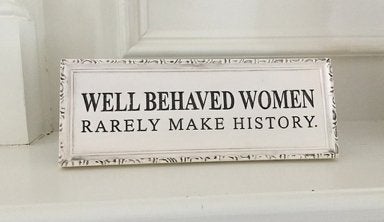“When is a movement not a movement? When it’s a marketing campaign in a movement’s clothing” – Mari Brighe
You might not know what femvertising is, but you’ve definitely seen the adverts its spawned. Always’ 2014 ‘#LikeAGirl’ campaign was viewed over 90 million times alone.
The term ‘femvertising’ was coined in 2014 by SheKnows Media to describe “advertising that employs pro-female talent, messages and imagery to empower women and girls.” ‘Fem-verts’ target women and girls through their advertising, often tackling issues such as the glass ceiling, double standards in the workforce and gender inequality. Whilst undertones of female empowerment have been present in ads since the 60s, it was Dove’s 2004 ‘Real Beauty’ campaign that really kicked off the concept of femvertising. The campaign was radical, and the buzz surrounding it brought thirty times more media exposure than paid media space would have. Other companies began to pick up on femvertising and wanted to show consumers their commitment to social awareness and gender equality.
Nowadays, our timelines – especially around International Women’s Day and the US’s Women’s History Month – are flooded with campaigns promoting girl power. It’s easy to look at femvertising as a good thing. In 2019, 91% of women in the SheKnows survey, agreed that the portrayal of women in ads directly impacted their self-esteem. This makes us consider, how can ads that challenge gender norms and stereotypes be bad? Surely, they should be applauded for their pro-women messages.
It is important to remember that the problem lies not with the adverts themselves, but the issues they’re masking. Many companies, who brand themselves as feminists through their advertising, are failing to uphold feminism during their businesses operations. In 2015 KPMG, an accounting firm, ran an advert with the slogan that they were “continuing our commitment to the next generation of women leaders.” Despite this stance for gender equality in the workforce, the campaign was running at the same time as the company faced a 400 million USD class-action suit for a continued pattern of gender discrimination. This included them denying promotions to women or penalising those who took maternity leave.
This hypocrisy can be seen frequently in the advertising industry. Audi’s 2017 ‘#DriveProgress’ campaign highlighted the struggles women face, especially in the workforce. While branding themselves as a company that cared about women’s rights and equality, the company itself doesn’t practise what it preaches. Audi’s six-person executive team has no women, and their board of directors at the time was comprised of 84% men.

Even Dove, the company that started it all, is not without controversy. While Dove is committed to promoting their theme of sisterhood and the belief that women are more than just their looks, their sister company Axe, frequently sexualises women in their campaigns. In one advert, literally reducing women down to their breasts. Proctor & Gamble (the parent company that owns Dove and Axe) have no problems running ads that empower women through Dove. At the same time, they run ads that degrade women through Axe. At the end of the day, they don’t really care about feminism.

Femvertising has also been accused of “pink-washing” feminism. This means the important movement has been reduced down to shareable hashtags and simplistic ideas. Femvertising is surface-level activism that sells the idea that self-esteem and confidence are all that are missing. It is a convenient form of feminism which avoids focusing on the underlying reasons for the movement. It allows companies to brand themselves as feminist, creating an ‘illusion of progress’, without actually being held accountable to be feminists in their practices.

Nevertheless, femvertising doesn’t have to be an entirely bad thing. I believe that consumerism and feminism don’t have to be mutually exclusive. There are companies, such as the non-profit Girls Who Code, who are already doing it right. Katie Martell, an American communications strategist, believes that femvertising is a spectrum. Fem-verts range from exploiting feminism to championing it, which depends on not just the advert, but the behaviour of the company itself. Her Litmus test highlights how to distinguish between a ‘good’ fem-vert and a ‘bad’ one. If mostly no, the ad is exploitative. If mostly yes, the ad is a champion.
It’s great that companies are choosing to send out messages of feminism, especially after decades of adverts that only served to create new insecurities for women. However, until we begin to see these companies actually working towards gender equality instead of just paying lip service to it, we have to see femvertising for what it is: a marketing gimmick.
Words by Annabel Cohen.
Edited by Lottie Watt.



